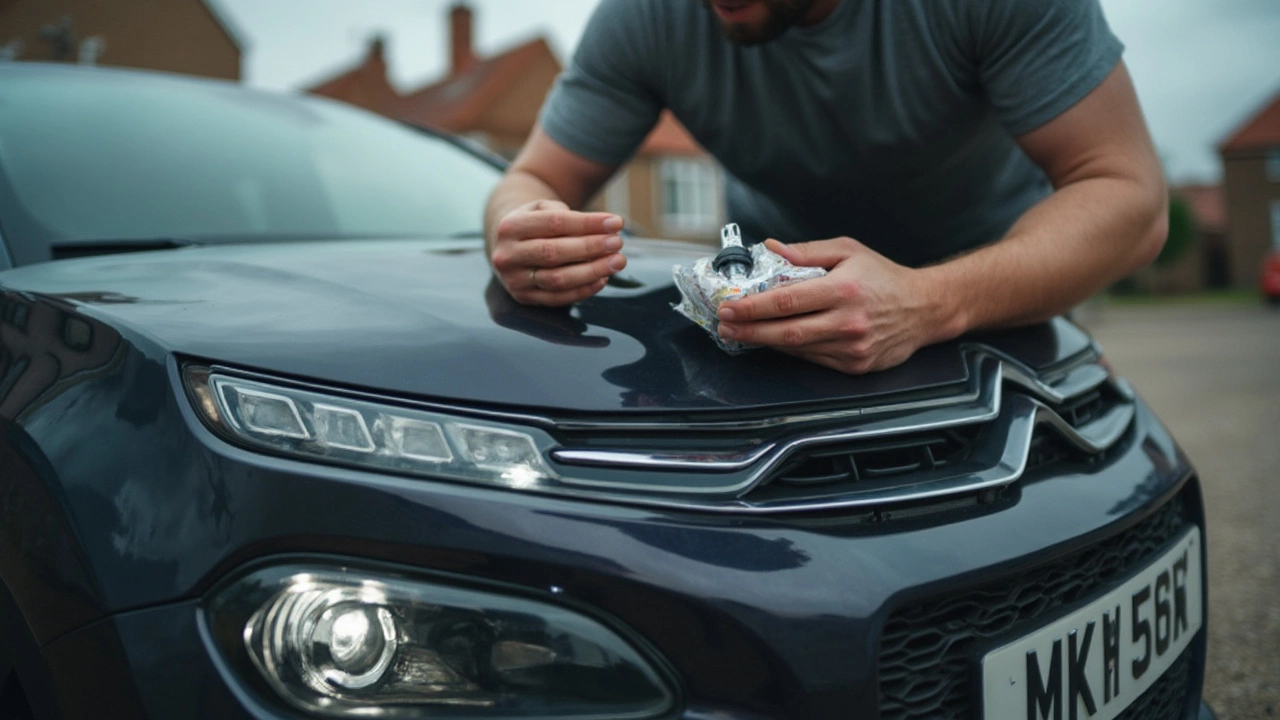If you’ve been scrolling through car forums or watching street‑racing videos, you’ve probably seen rides lit up with bright, crisp light. Most of those lights are LED bulbs. They’re cheaper to run, last longer, and look modern. But before you pop the hood, there are a few things you should know to avoid cheap mistakes.
LED stands for Light‑Emitting Diode. Unlike halogen or xenon bulbs, LEDs create light by passing electricity through a semiconductor. The result is a focused, white‑blue light that’s usually brighter than stock bulbs without using much power. That low power draw means your battery stays healthier, and you’ll notice a small boost in fuel economy.
Another perk is the instant‑on effect. Turn the key and the lights are at full brightness in a split second – no warm‑up lag. LEDs also run cooler, so there’s less heat stress on your headlight housing, which can extend the life of your whole lighting system.
First, match the bulb type. Headlights use H1, H4, H7, or similar designations. Taillights, turn signals, and interior lights each have their own sizes. The packaging will list the exact fit – double‑check it against your car’s manual.
Next, think about brightness and colour temperature. Most drivers like 6000K (a cool, daylight look) for headlights, while 3000K gives a warm amber tone that’s easier on the eyes at night. Look for a lumen rating that’s close to or higher than your stock bulb – about 1500‑2000 lumens for a standard headlight is a good benchmark.
Finally, consider the beam pattern. Cheap LED kits often have a scattered pattern that can glare other drivers. Reputable brands shape the light to mimic the factory beam, keeping visibility high and glare low. Reading reviews and watching installation videos can save you from buying a sub‑par set.
When you’ve picked the right bulbs, the install is usually a simple plug‑and‑play. Most modern cars let you remove the old bulb, disconnect the wiring harness, and snap the LED in. Some older models need an adapter or a resistor to stop the car from thinking a bulb is out, which can cause flickering. If you’re not comfortable with that, a quick visit to a local auto shop will only cost a few dollars.
Legal side: many regions have rules about how bright headlights can be and what colour they may emit. In the UK and EU, headlights must stay within a certain luminous intensity and can’t be overly blue. Check your local transport authority’s guidelines before you install super‑bright LEDs, especially on the front of the car.
Maintenance is pretty hands‑off. LEDs last anywhere from 20,000 to 50,000 miles, far longer than halogen bulbs. If a bulb does fail, it usually just stops working rather than dimming slowly, so you’ll know right away. Keep the housing clean – dirt can reduce brightness and cause the LED to overheat.
Bottom line: LED bulbs give you brighter light, lower power draw, and a modern look, but you need to pick the right fit, watch the beam pattern, and respect local laws. With a bit of research, swapping your old bulbs for LEDs is a quick upgrade that makes night driving safer and your car stand out on the road.

Thinking about swapping your factory headlight bulbs for LEDs? This article breaks down whether it’s possible, what you’ll need, and the real-world pros and cons. We tackle rules, compatibility, installation steps, and potential legal headaches. You’ll find shortcuts, common mistakes, and practical tips to help you do it right or decide if it’s worth the hassle. Make sure you light the road safely and stay on the right side of the law.